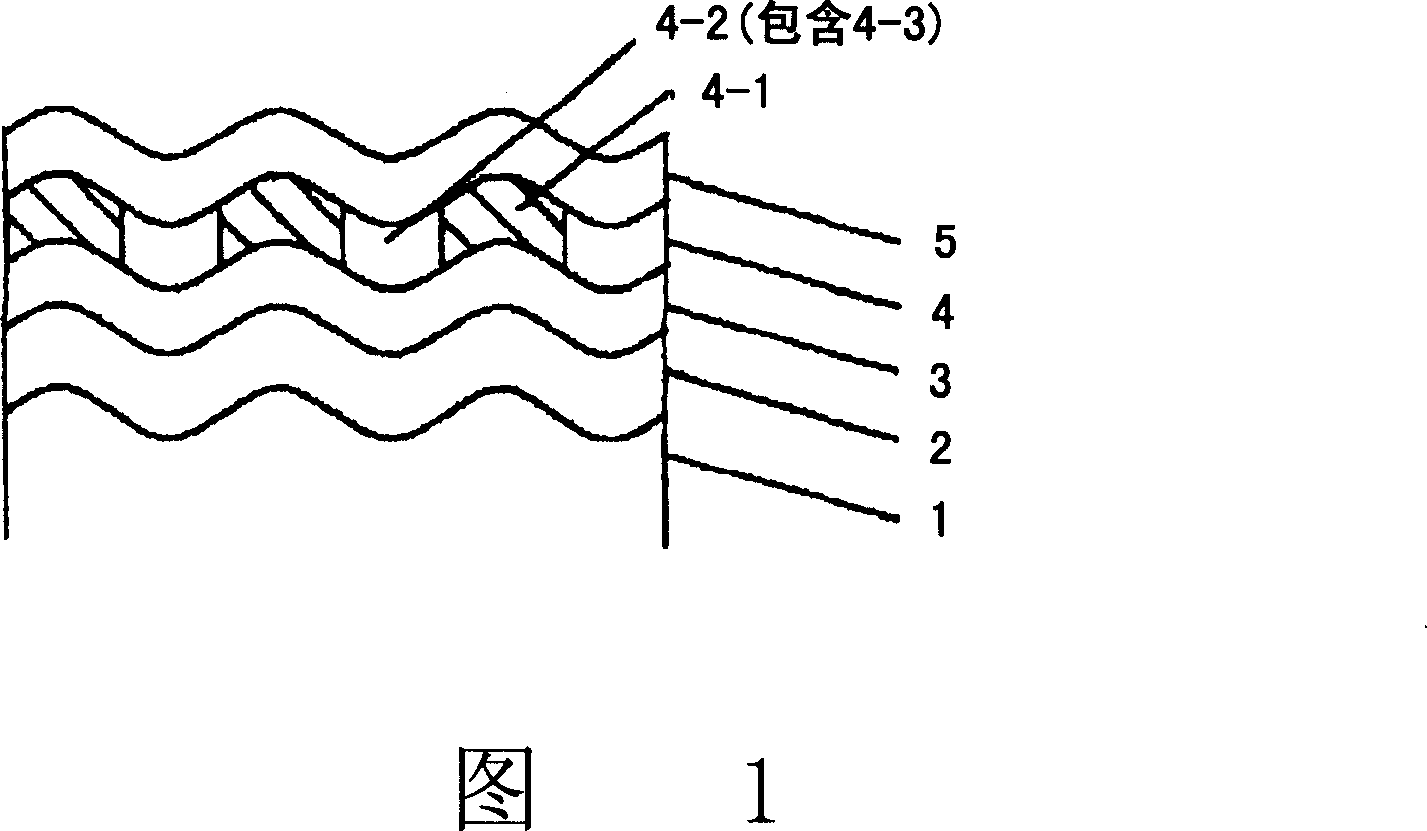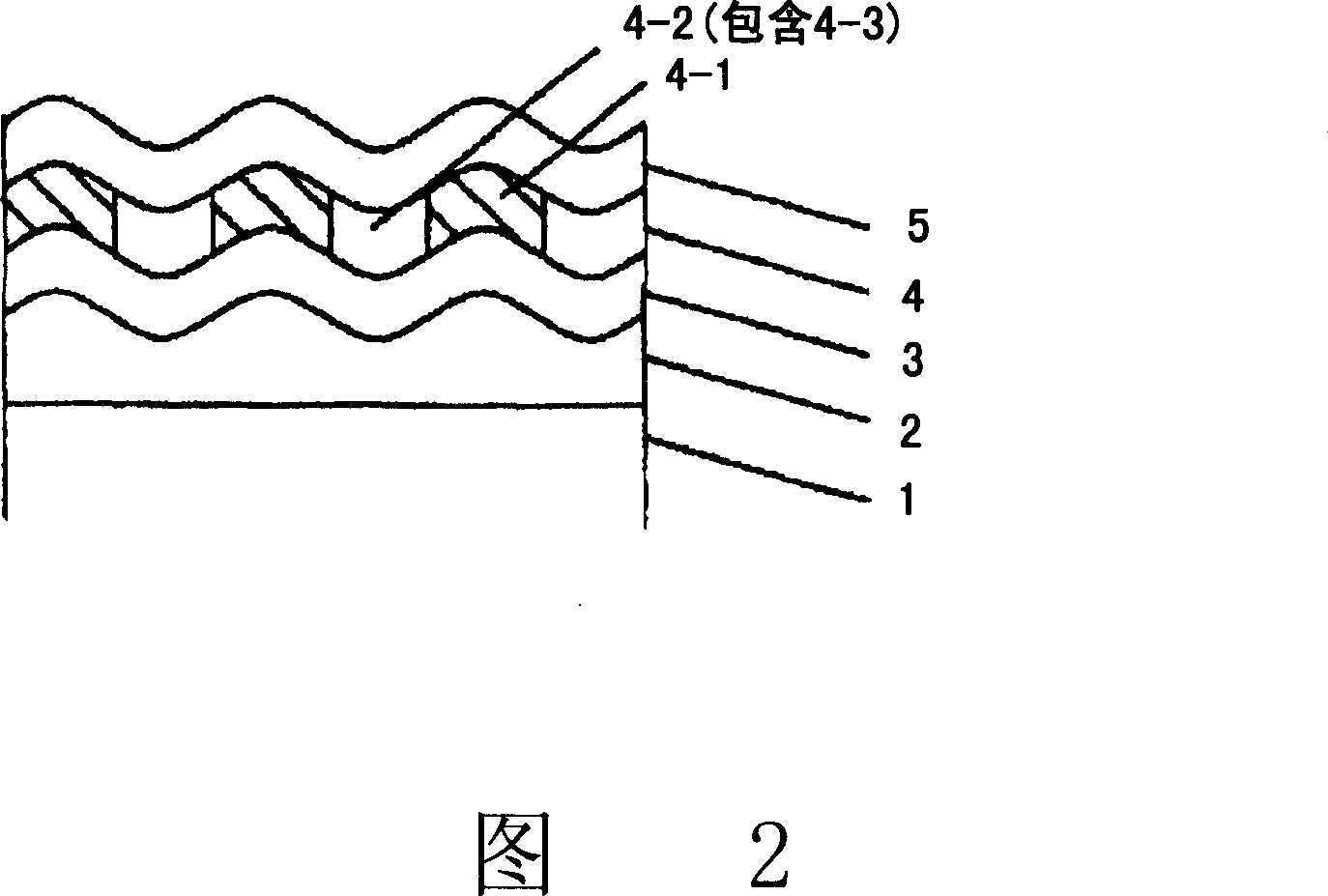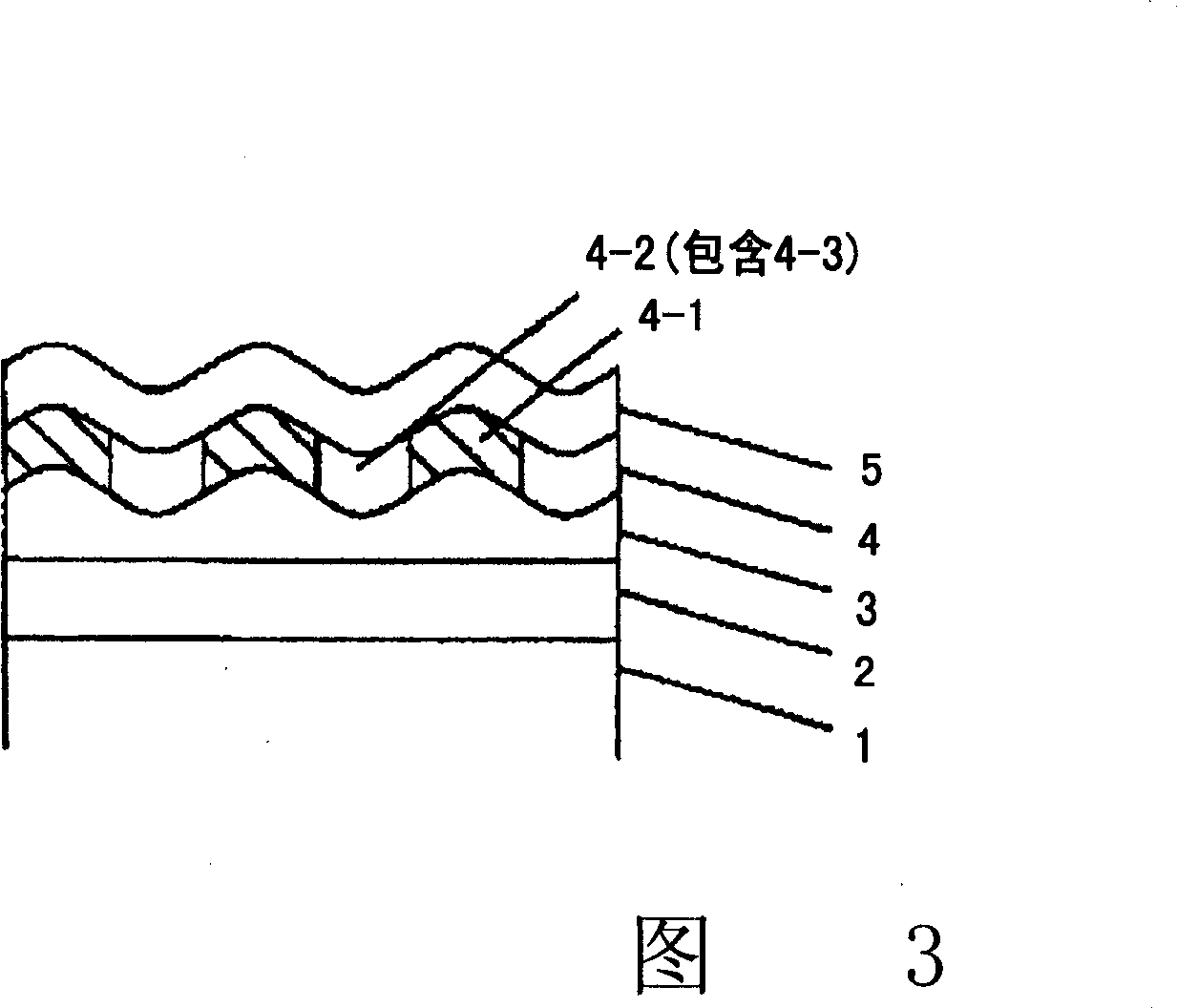Magnetic recording medium and a method of manufacturing the same
一种磁记录介质、磁记录层的技术,应用在磁记录、磁记录层、数据记录等方向,能够解决大量加工时间、复杂、磁性质劣化等问题
- Summary
- Abstract
- Description
- Claims
- Application Information
AI Technical Summary
Problems solved by technology
Method used
Image
Examples
Embodiment 1
[0064] The non-magnetic substrate 1 is a disk-shaped silicon substrate whose smooth surface has a surface roughness Ra=0.5 nm. After the substrate is cleaned, the substrate is introduced into the EB equipment for wire processing on the surface of the substrate. When this processing is performed, the position of the electron beam is fixed and the substrate is moved radially and horizontally while rotating the substrate to form concentric circles. The spacing between the ridge lines is controlled to be 25 nm, and the height difference between the top line and the bottom line of the wave structure is controlled to be 10 nm. Then, the substrate was introduced into the sputtering equipment and sprayed with Co 92 Zr 5 Ta 3 The target forms a soft magnetic backing layer 2 of amorphous CoZrTa with a thickness of 100 nm. Subsequently, a ruthenium underlayer 3 was deposited with a ruthenium target at 3 mTorr argon pressure to a thickness of 5 nm. Then, using (Co 80 Pt 20 ) 90 (S...
Embodiment 2
[0066] The same non-magnetic substrate 1 as in Example 1 was used. After cleaning, the substrate was introduced into a sputtering device, and a soft magnetic backing layer 2 of CoZrTa with a thickness of 100 nm was formed in the same manner as in Example 1. The substrate is introduced into EB equipment, and line processing is performed on the surface of the soft magnetic backing layer 2 . In the same manner as in Example 1, concentric circles were formed during the line processing. The spacing between the ridge lines was controlled to 25 nm, and the difference between the heights of the top and bottom lines of the wave structure was controlled to 3 nm. Afterwards, in the same manner as in Example 1, the ruthenium lower layer 3, CoPt-SiO 2 Magnetic recording layer 4, carbon protective layer 5 and liquid lubricating layer. Thus, the magnetic recording layer of Example 2 was produced.
Embodiment 3
[0068] The same non-magnetic substrate 1 as in Example 1 was used. After cleaning, the substrate was introduced into a sputtering device, and a soft magnetic backing layer 2 of CoZrTa with a thickness of 100 nanometers and a ruthenium lower layer 3 with a thickness of 5 nanometers were formed in the same manner as in Example 1. The substrate is introduced into the EB equipment, and wire treatment is performed on the surface of the ruthenium lower layer 3 . In the same manner as in Example 1, concentric circles were formed during the line processing. The spacing between the ridge lines is controlled to 25 nm, and the height difference between the top line and the bottom line of the wave structure is controlled to 3 nm. Thereafter, the magnetic recording layer 4, the protective layer 5, and the liquid lubricating layer were sequentially formed in the same manner as in Example 1. Thus, the magnetic recording layer of Example 3 was produced.
PUM
| Property | Measurement | Unit |
|---|---|---|
| particle diameter | aaaaa | aaaaa |
| particle diameter | aaaaa | aaaaa |
| particle diameter | aaaaa | aaaaa |
Abstract
Description
Claims
Application Information
 Login to View More
Login to View More - R&D
- Intellectual Property
- Life Sciences
- Materials
- Tech Scout
- Unparalleled Data Quality
- Higher Quality Content
- 60% Fewer Hallucinations
Browse by: Latest US Patents, China's latest patents, Technical Efficacy Thesaurus, Application Domain, Technology Topic, Popular Technical Reports.
© 2025 PatSnap. All rights reserved.Legal|Privacy policy|Modern Slavery Act Transparency Statement|Sitemap|About US| Contact US: help@patsnap.com



